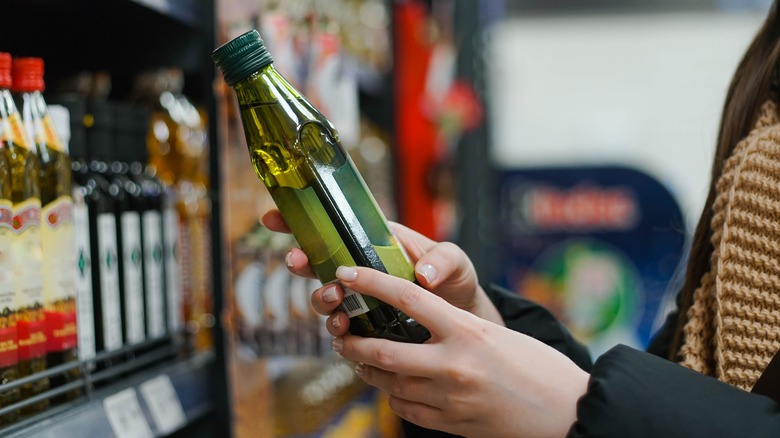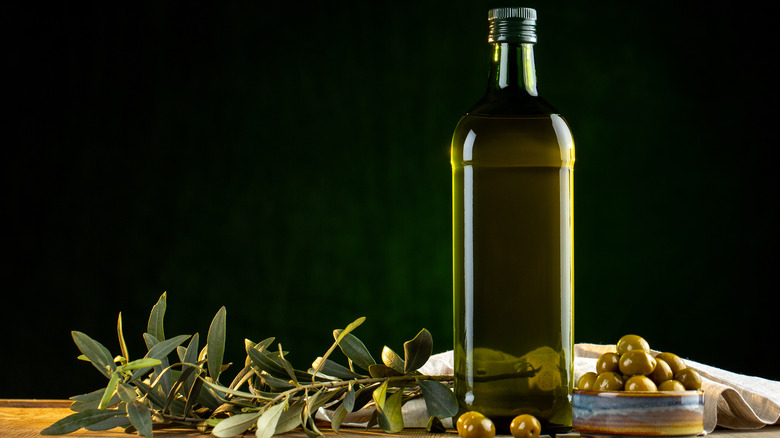Your Olive Oil Bottle Color Matters More Than You Might Expect
If you've ever been shopping for olive oil, you've likely come across two bottles that were almost identical in terms of volume, quality, and region but had varying price points. The only difference? The color of the bottle.
Olive oil can be found in large quantities in stainless steel jugs, as well as plastic or glass containers. Generally, it's recommended that you purchase glass or stainless bottles, as there could be PVCs in plastic that could affect the oil inside, according to Olive Oil & Beyond.
But even within the glass containers, you'll find bottles that are clear and others that are tinted dark green. This is far from being a matter of aesthetics or kitchen decor: It can affect the quality, taste, and integrity of your olive oil in a big way, especially when dealing with higher-quality extra virgin olive oils. But why are some tinted and others not, and which is better for your oil? It's important to find out.
Preventing oxidization
When exposed to sunlight and air, olive oil will begin oxidizing, which can negatively affect the overall flavor, according to Food Crumbles. There are screw tops on olive bottles to seal out air, but sunlight gets blocked out through the tinted glass. Glass can be tinted any color, but dark green is the ideal, as it prevents chlorophyll in the oil from oxidizing specifically.
However, you may find yourself holding an expensive bottle of very high-quality olive oil that's in a perfectly clear glass bottle. This isn't a mistake on the manufacturer's part. Good olive oil should be used within 30 to 60 days to preserve the fresh flavors and aromas, advises We Olive. High-end oil should not be packaged in containers that are meant to be preserved for extended periods of time (via Masterclass). Regardless if the bottle is tinted or not, make sure to store it in a cool, dry, and dark place.

